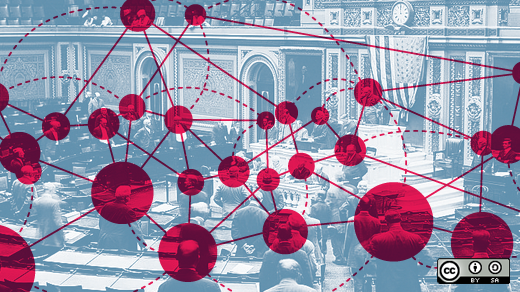Open leaders are systems thinkers. When they look at the world, they see a series of dynamic relationships—between people, teams, and resources. These relationships are the elements that are always in motion, always in flux, and ultimately drive the success (or failure) of our businesses.
In fact, the problems that drive us today demand this kind of thinking, because solving them requires us to think beyond the walls of our organizations and devise ways we can leverage the best talent, the best resources, and the best ideas from anywhere. That's what open organizations, as Jim Whitehurst defines them, do best.
Open leaders understand the way these interconnected relationships make their businesses hum. And they recognize the importance of focusing on those relationships to ensure they're healthy, productive—and, above all, balanced.
In fact, open leaders are masters of balance.
I've learned many lessons about balance throughout my career and life (it's a tricky word), but working in an open organization has really broadened my thinking on the subject. I now see balance as a critical leadership capability.
I've met people who are definitely skeptical about the benefits of open organizations. But that skepticism really arises because they don't view those organizations as complete systems. Instead, they focus solely on singular characteristics.
"Freedom" is one popular point of confusion, I've discovered. "How can you just give your employees free reign to do as they please?" people ask me. "How does anything ever get done? How do you maintain control?" These skeptics often forget that in open organizations, values like "freedom" never exist in a vacuum. They're part of a system.
At Red Hat, for example, freedom is connected to another important core value: "accountability." Red Hatters exercise the freedom to make decisions most relevant to their everyday work (after all, they tend to know best what will help them succeed!), but they always do so with their teams' overall goals in mind. They're accountable to those goals, so they exercise their freedom in a way that's strongly aligned with a shared purpose. Freedom and accountability balance one another in a delicate but extremely powerful way.
For example: Imagine your team encounters something really unexpected—a competitor makes a major move, social media has blown up with customer complaints, a system goes down (we've all been there!). How do they respond? What instincts guide their reactions? Do they view the change as an opportunity, or do they panic?
Ideally, you'll want your team making the quickest and most effective decision possible given their constraints. That's what every leader wants! But if you haven't established the context for the work they're doing (for what's at stake, for the goals at hand, etc.), then they're likely going to make a suboptimal decision, get stuck completely, or turn to you to rebalance them.
That's fine, of course, but it has a crucial opportunity cost: your time, which is often in short supply in today's rapidly-changing world. Now you (one person) must explain the threat, emergency, or opportunity to the team, and how you're going to refocus them to get them back on track.
But if your team already knows not only what they're doing but why they're doing it—if everyone shares some understanding of the context, the goals, and the desired outcomes—then they're going to feel empowered to find the best path forward together, and to respond to threats much more effectively. Often, this will occur without your intervention. The system will balance itself if it has enough information to do so! And you'll all be back on track much more quickly than you would be otherwise.
Balance is everywhere in this scenario. The team itself is trying to stay balanced, trying to keep its orientation and momentum when something throws them off-kilter. But the leader is performing her own balancing act: Giving the team enough data, enough context, so they can act effectively, but not too much that they become paralyzed with overload.
The only way you can adequately scale your leadership efforts to face changes like the ones I described is to nurture the right relationships, set clear direction, and build clear frameworks for accountability so that everyone knows where they're headed, what they trying to achieve, and why that's important. Then, you need to balance these prescriptive frameworks with your teams' innovative powers—which only emerge when they have the freedom to act as they see fit. The opposite is true, too: Let your teams do everything they please, and you'll all be working at cross-purposes. Then nothing will get done.
Being an open leader looks less like commanding individuals and more like orchestrating an ecosystem: reacting when core pieces of it seem to fall out of place or get sidetracked, cultivating strategies and frameworks for repairing or replacing them efficiently and effectively, and building both trust and a collaborative spirit between teams so they can solve things together. Viewed in isolation, values like "freedom" and "accountability" just don't make sense. Practice one without others, and you're going to throw everything—and everyone—out of balance.
But mastering balance benefits open leaders outside the workplace, too. Next time, I'll explain how that's the case.






Comments are closed.